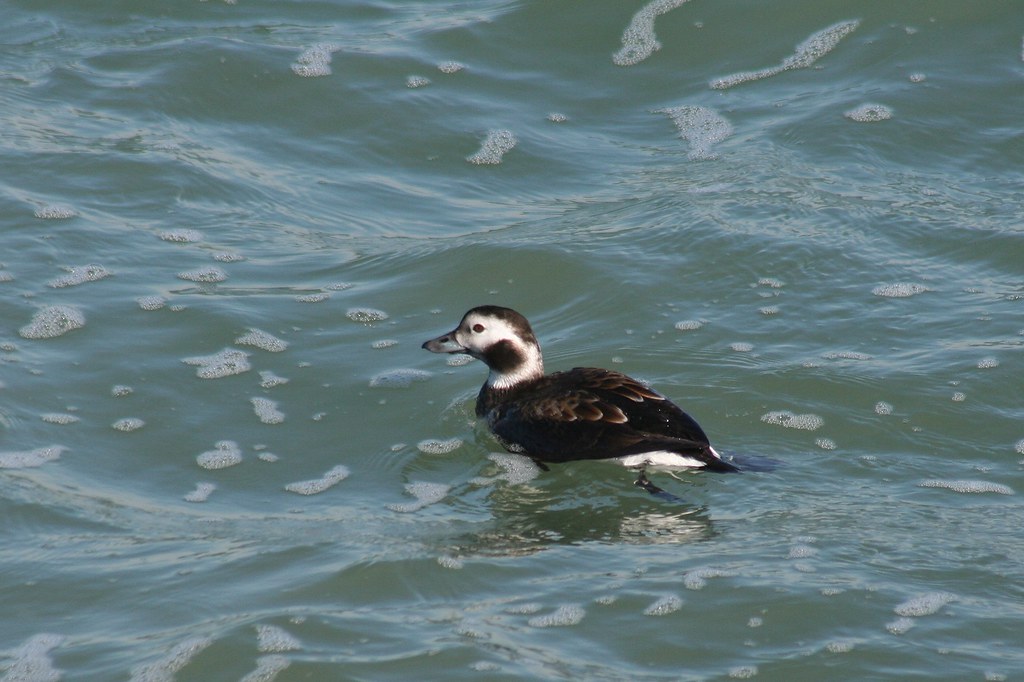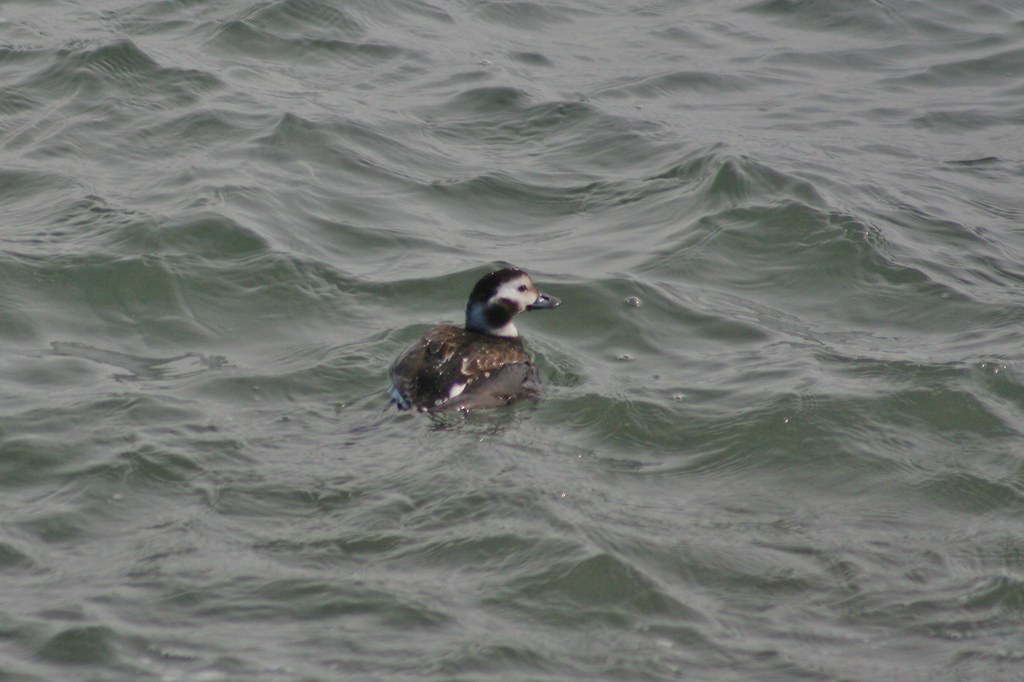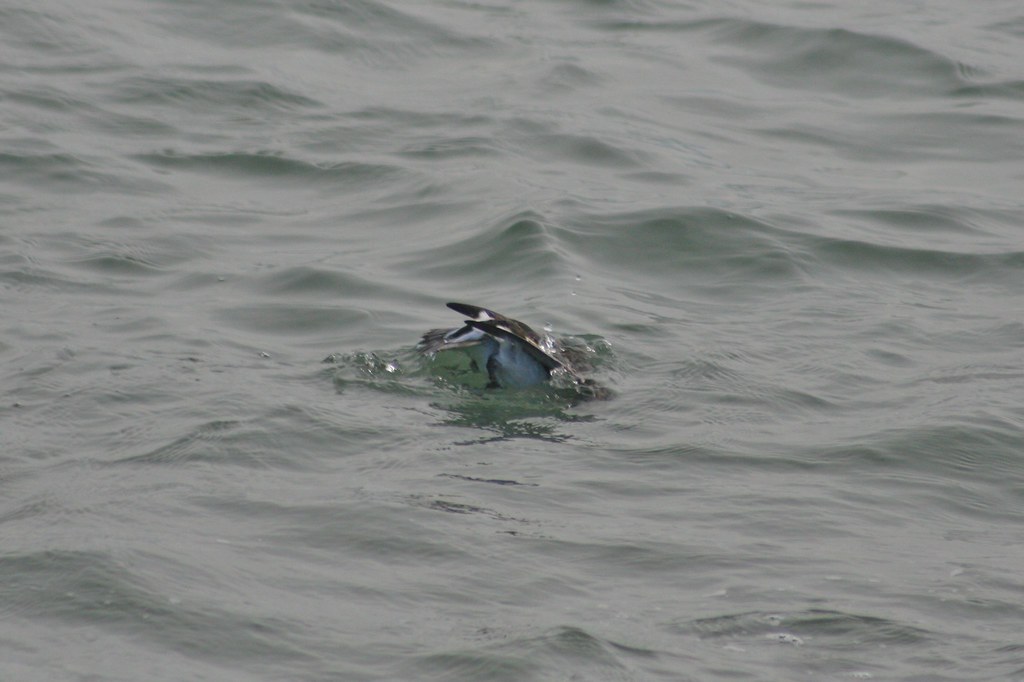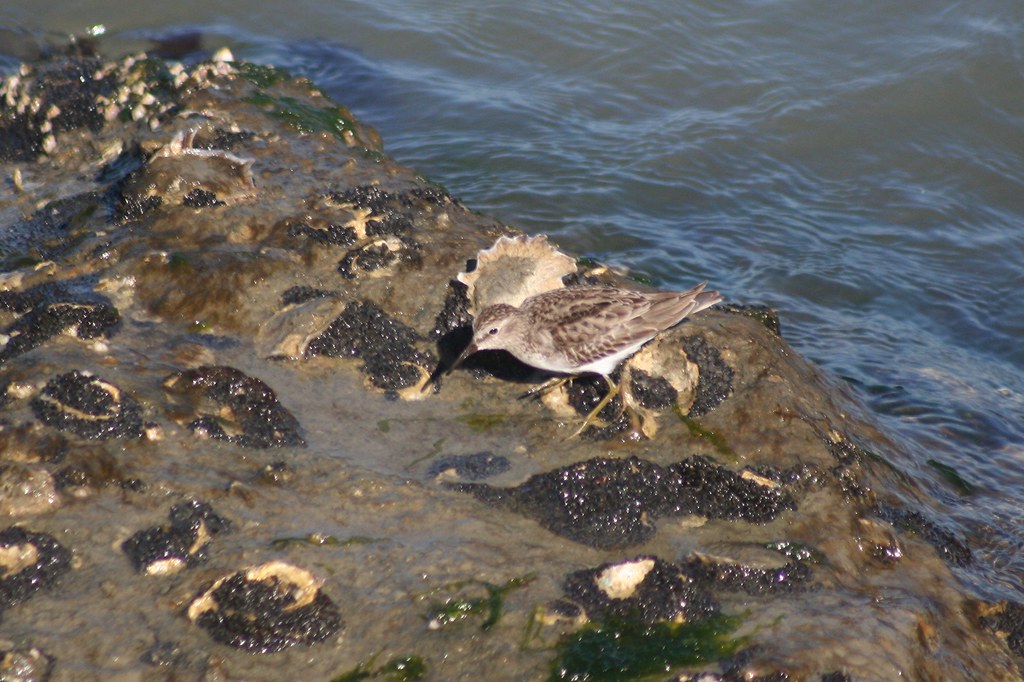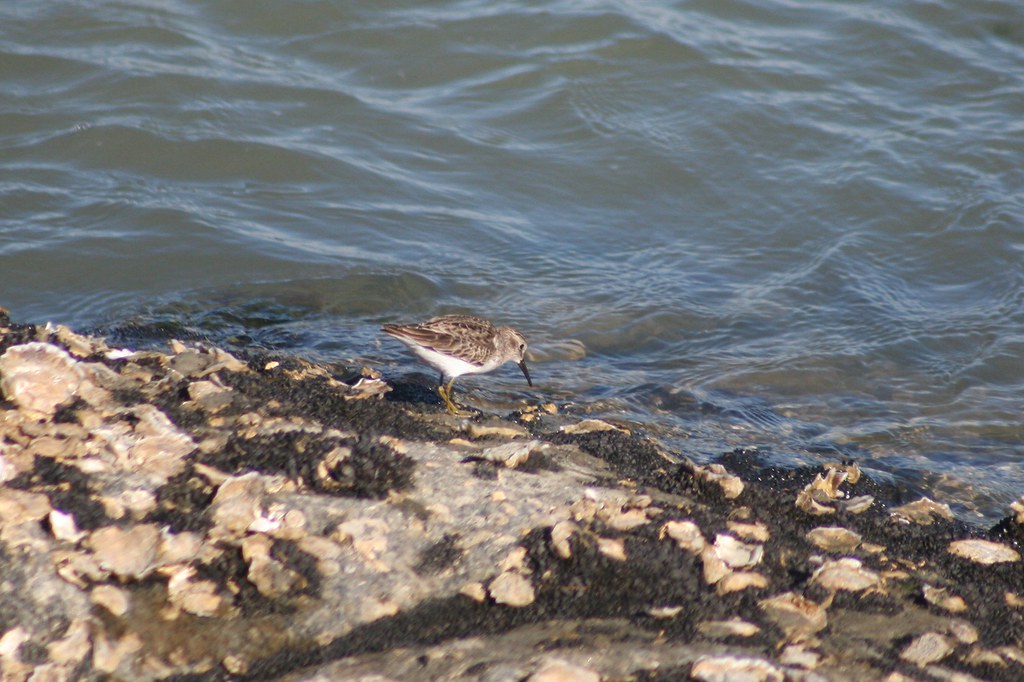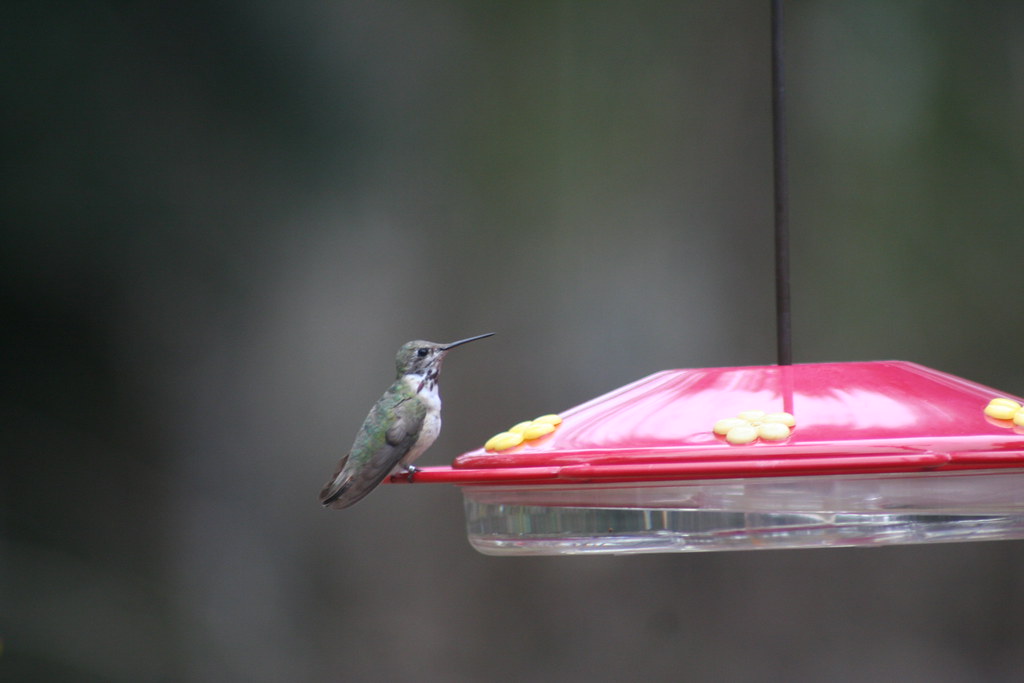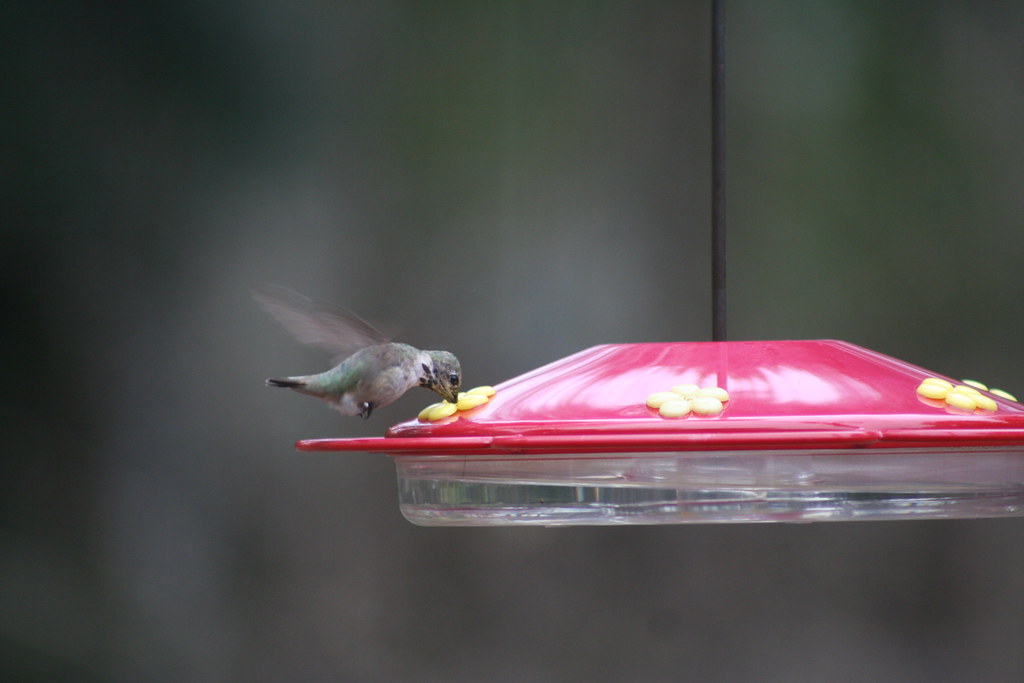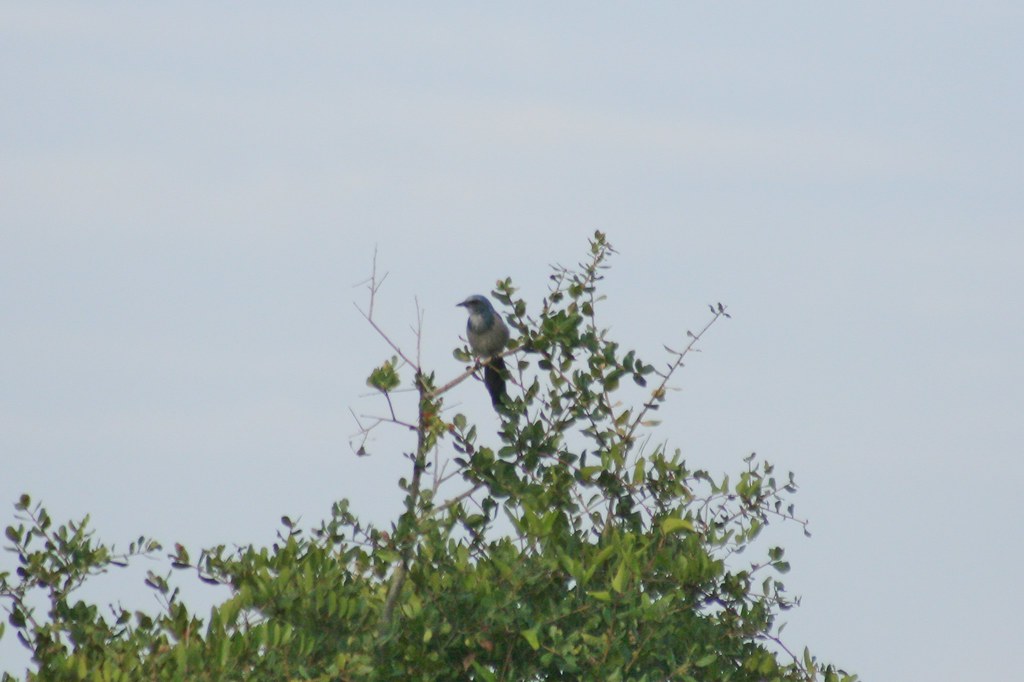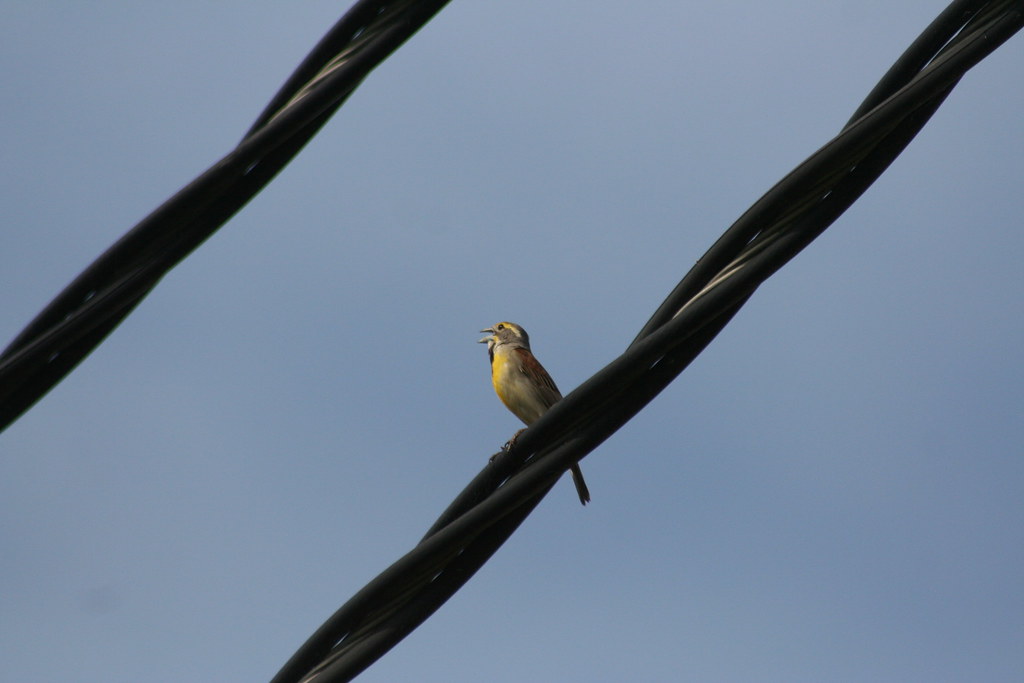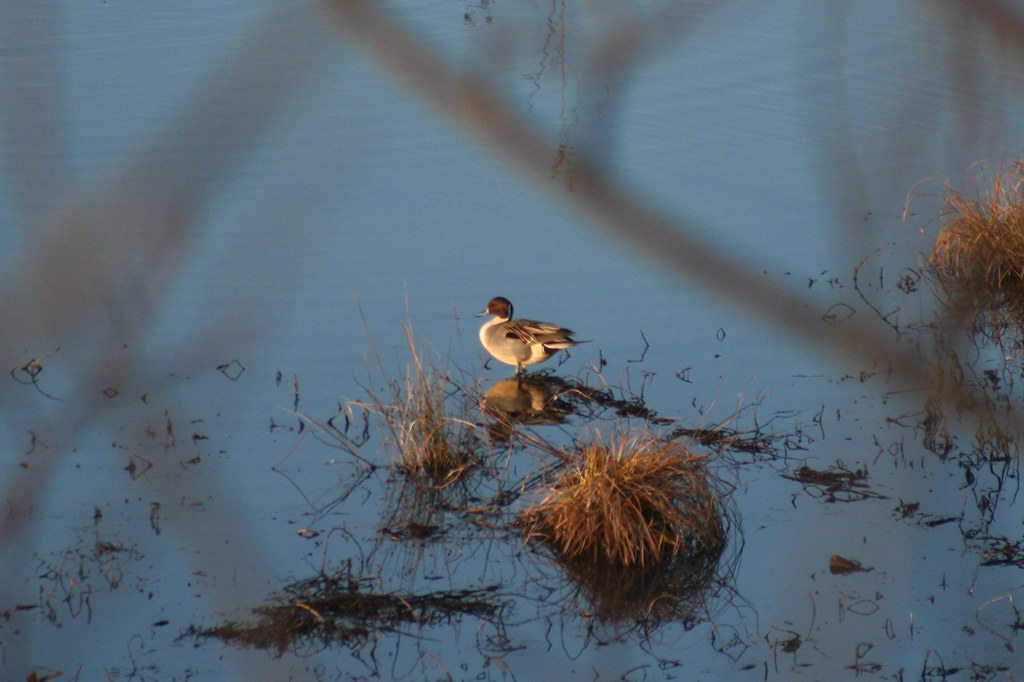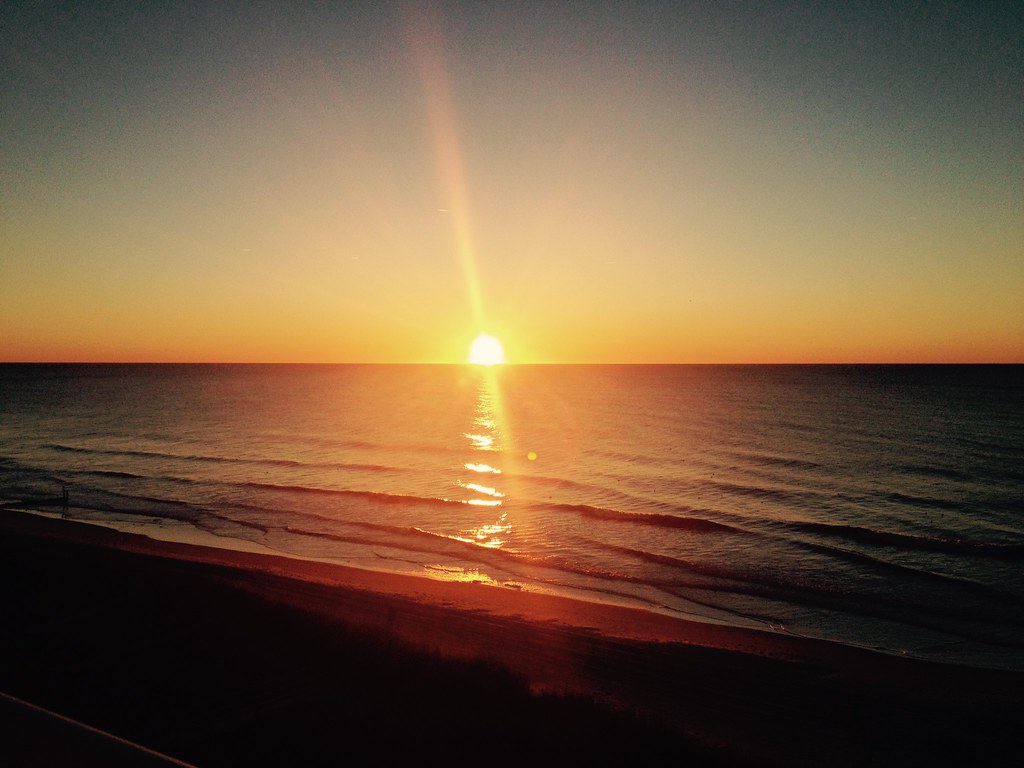 |
| Birders are some of the few people who get up and appreciate a sunrise. |
It might sound cliche but it's true. I just really love that park. I would happily pay my $5 entrance fee each day to go. The place is just beautiful, with a large salt marsh and ponds for ducks, waders, and shorebirds, scrubby seaside forest for migrating warblers and passerines, and an untouched beach with a jetty on the northern edge. And like you might've guessed, it's downright birdy. The marshes hide secretive rails, and it's the only place I have seen Clapper Rail.
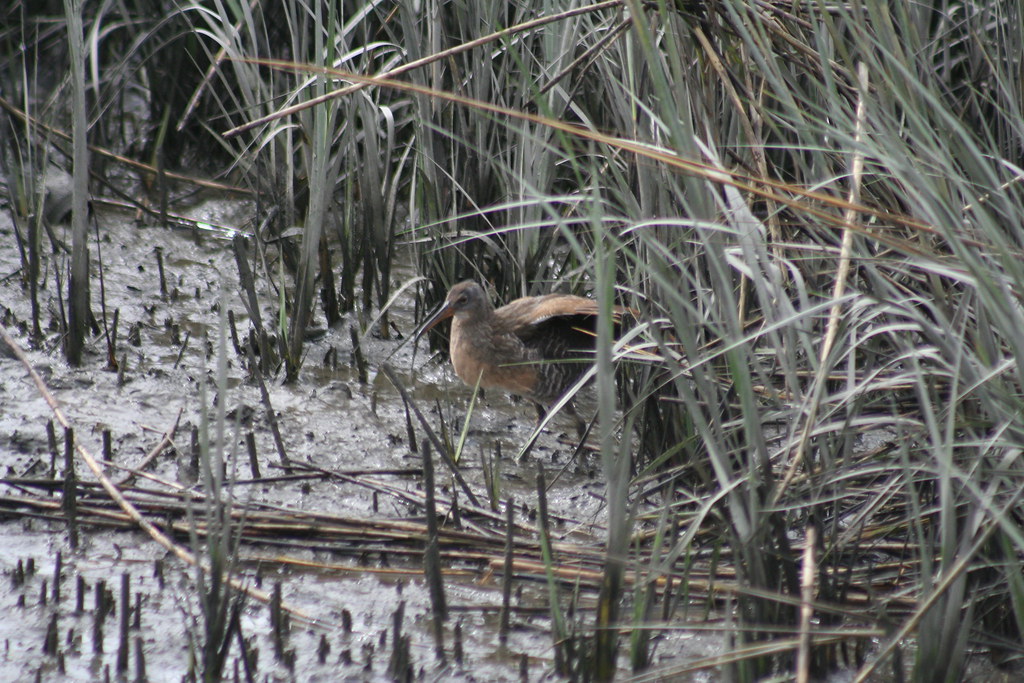 |
| Clapper from 2013. |
The reason for this post was because over the long weekend, we went down to Myrtle Beach and I got to bird there. So here is Myrtle Beach Trip, Part I.
To start things off, just as we drove on the causeway a male Hooded Merganser swam next to the car. The morning was gray and overcast, but despite that I got a decent picture.
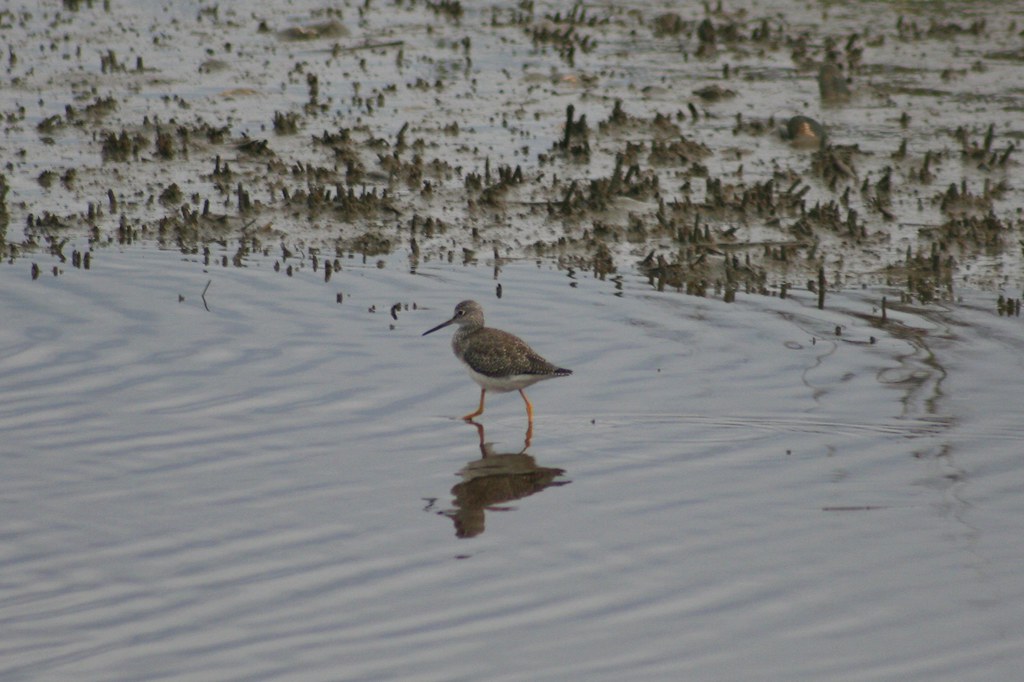 |
| A yellowlegs of the Lesser persuasion. |
I said goodbye to the fellow birders (one was named Frank... hi Frank! The other said he was going to the Carolina Bird Club meeting in a couple weeks. See you there!) and caught up with my dad (who is a non-birder) who said he had found a duck with a "woodpecker bill". I was confused for a bit until the bird revealed herself... a female Red-breasted Merganser!
This was actually a life bird for me, and nicely wrapped up all three North American mergansers for me. We saw another female later on.
A male Common Eider had been reported about a week earlier, and was continuing. We walked about a mile to the rock jetty were he had been reported. Along the untouched beach we spotted White-winged Scoters, Double-crested Cormorants, American Oystercatcher, and Brown Pelican. When we reached the jetty, the inlet it had formed was full of Bonaparte's Gulls and Common Loons. I saw a few birders headed our way (easy to see because of their scope tripod) and I hurried to ask them about the eider and they said he was headed out to sea, so I should hurry. And hurry I did! I raced down the jetty to find him.
Before I got to the end, I was distracted by a beautiful little duck. It was a female Long-tailed Duck, which the birders had mentioned as well. She was super cooperative and give me some stunning looks. Not bad for a lifer!
Alas, I could not find the eider. A male Black Scoter fly-by was a consolation prize, another lifer. (And now another favorite!) Another birder, Francine, and her daughter joined me and together we tried looking for the eider. We thought we had found it, and maybe it was it, but it was far too distant to check. Before I left, another birder stopped by. Hopefully Francine and that other birder found the eider!
A Piping Plover had been reported on the other side of the jetty, near some mudflats. I went to go check it out. As we walked to it, a Ruddy Turnstone seemed to follow us among the rocks as it flew next to us. A Sanderling decided to join it just as I took a photo.
As we reached the end of the jetty, I set up my scope and scanned. And luckily enough, I found the plover! It was lifer number 274! It was much to distant to get a good shot, but hey, I can call it a plover.
 |
| That small white dot in the middle is a bird. |
To wrap things up, on the way back I got good pictures of a Least Sandpiper on the rocks and a Dunlin on the shore. I would say it was a good day of birding, with a lot of lifers and first of years!
Here is the checklist: http://ebird.org/ebird/ybn/view/checklist?subID=S21401624



